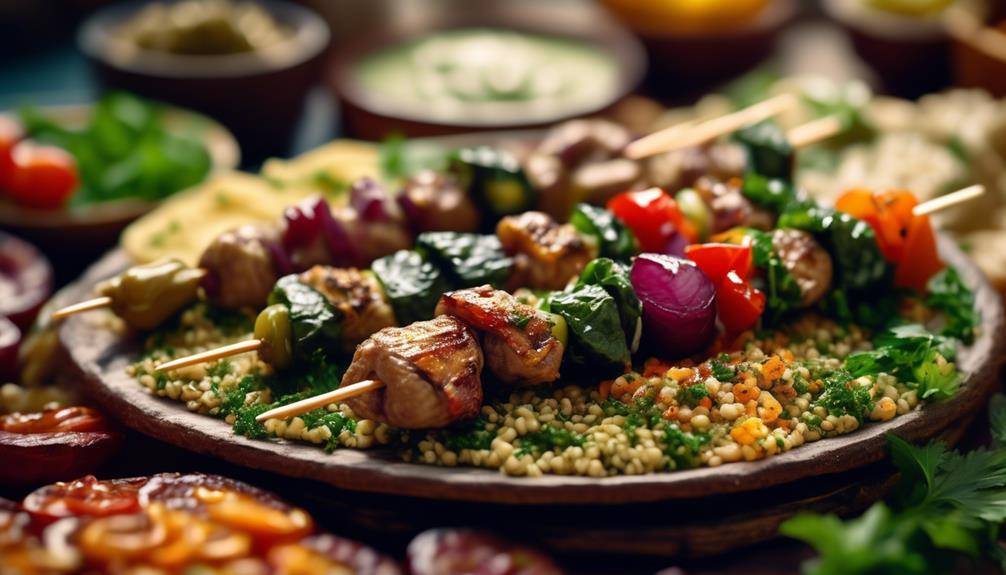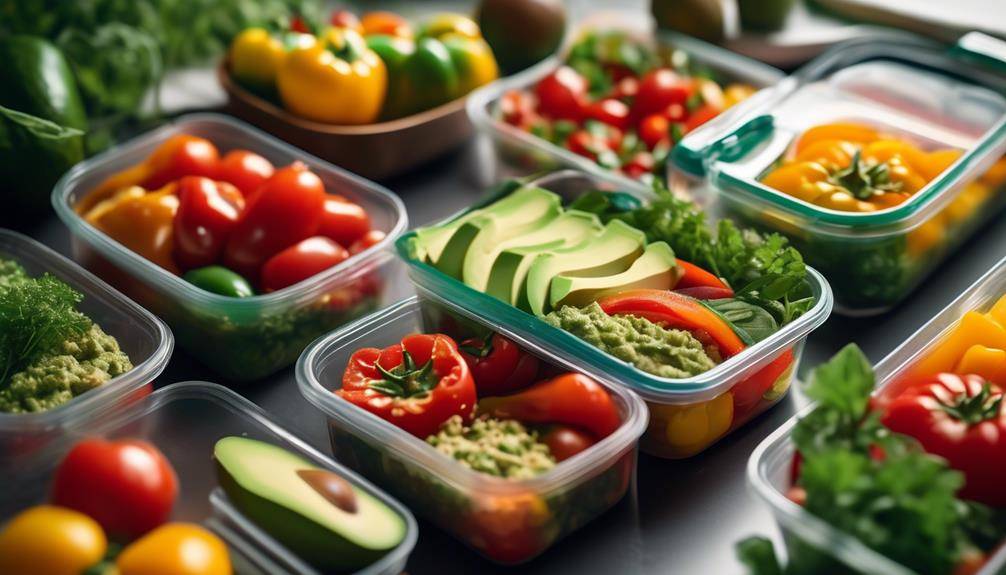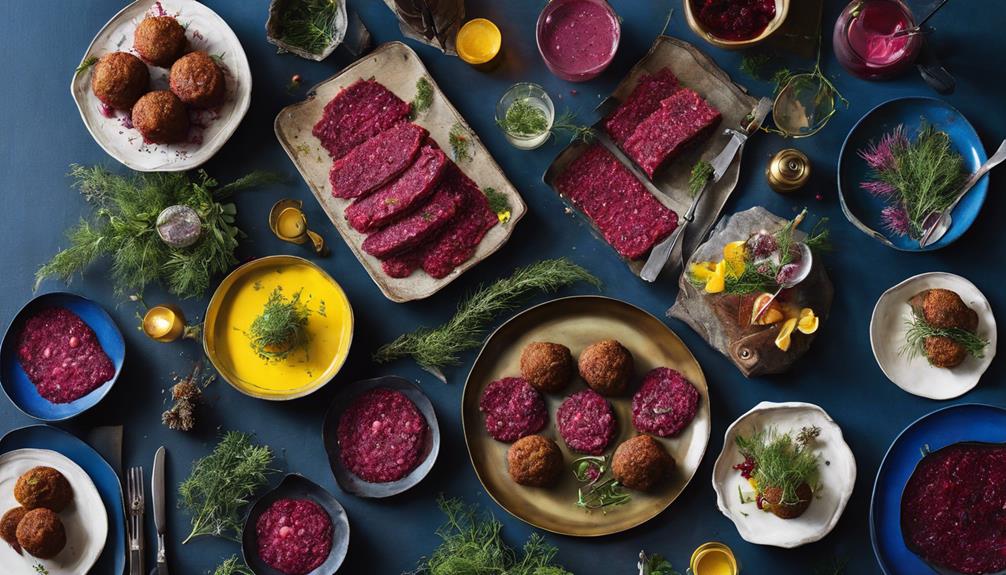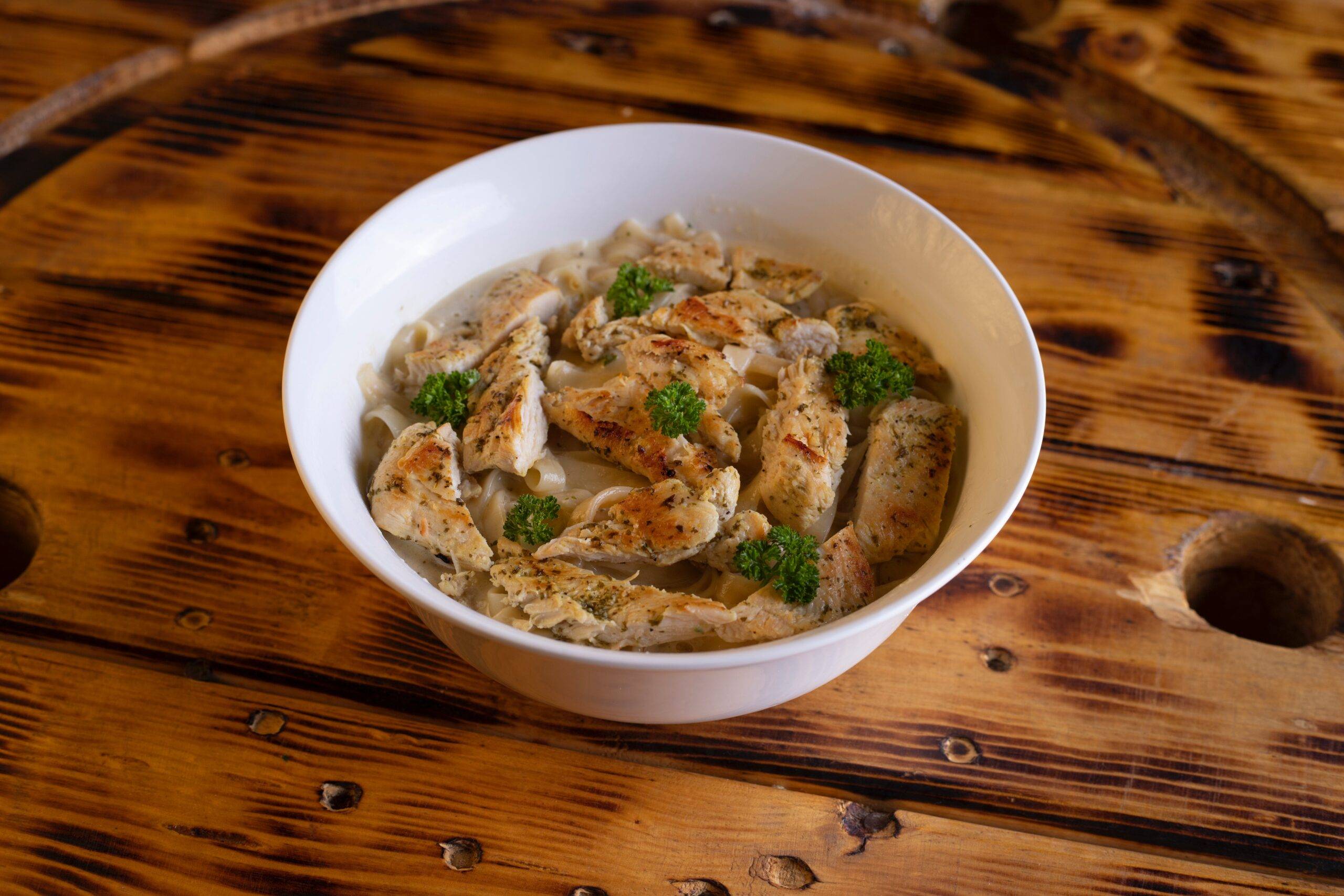The Best Lebanese Breakfast Dishes
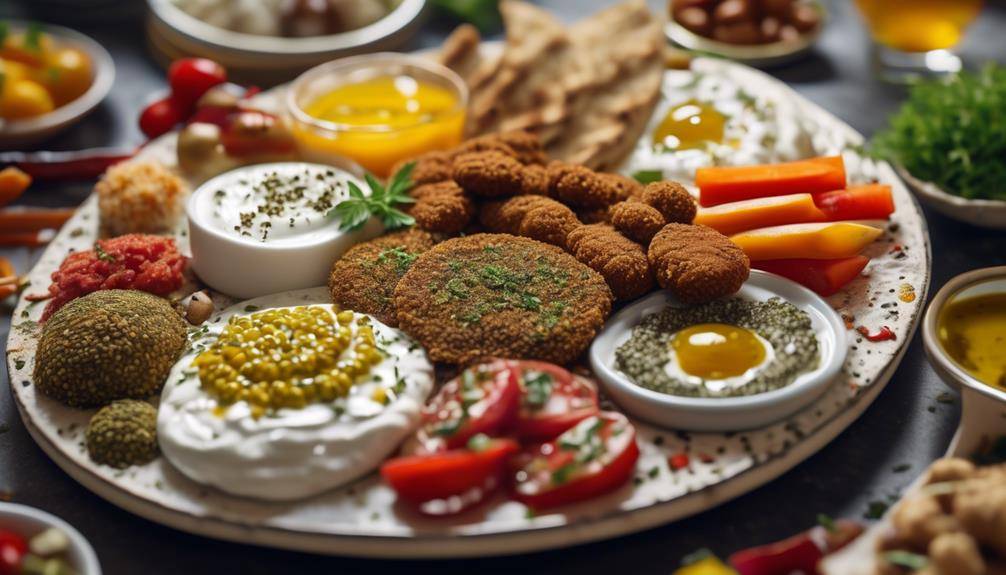
The Best Lebanese Breakfast Dishes are a tantalizing tapestry of taste and tradition. As you awaken to the aroma of warm, freshly-baked manakish, your taste buds tingle in anticipation of the buttery bliss that awaits. But that’s just the beginning.
From the savory fava bean stew known as foul meddamas to the creamy and tangy labneh, each dish is a delightful exploration of flavors. But what about the layers of toasted bread, chickpeas, and yogurt in fatteh? Or the spiced chickpea salad, balila? And let’s not forget the traditional Lebanese cheese, jibneh arabieh. Oh, and there’s also za’atar, an aromatic herb blend for dipping and spreading. So, are you ready to embark on a culinary journey that will leave you craving for more?
Manakish: Fluffy and Buttery Flatbread Delight
If you’re looking for a delectable Lebanese breakfast dish that will transport your taste buds to culinary heaven, look no further than Manakish: the fluffy and buttery flatbread delight. Manakish is a traditional Lebanese breakfast recipe that has gained immense popularity not only in Lebanon but also around the world. This mouthwatering creation is made by topping the dough with various ingredients and then baking it to perfection.
One of the reasons for Manakish’s popularity is the wide range of variations available. From traditional toppings like za’atar (a mix of dried thyme, sumac, sesame seeds, and salt), cheese, and olives, to more modern twists like labneh (a strained yogurt cheese) with fresh vegetables or even minced meat, there is a Manakish for every palate. The dough itself is soft and pillowy, thanks to the addition of olive oil and a touch of yogurt, which gives it a slight tanginess.
When it comes to enjoying Manakish, there are no rules. It can be eaten as a quick and satisfying breakfast, or as a snack throughout the day. In Lebanon, it is often served alongside a variety of dips like hummus, baba ganoush, and tahini. The combination of the warm and fluffy bread with the creamy dips creates a symphony of flavors that is hard to resist.
Whether you prefer the traditional za’atar Manakish or like to experiment with different toppings, one thing is for sure – this Lebanese breakfast dish is a true delight. Its simplicity, versatility, and incredible taste make it a favorite among locals and foreigners alike. So, next time you’re craving something delicious for breakfast, give Manakish a try and let your taste buds experience the magic of Lebanese cuisine.
Foul Meddamas: Savory Fava Bean Stew
Get ready to savor the rich and comforting flavors of Foul Meddamas, a savory fava bean stew that will take your Lebanese breakfast to a whole new level. This traditional dish is a staple in Lebanese cuisine and is enjoyed by locals and visitors alike. Foul Meddamas is made with cooked fava beans, garlic, lemon juice, and olive oil, creating a delicious and hearty stew that is perfect for starting your day.
Here are five variations of Foul Meddamas that you can try for a unique and flavorful Lebanese breakfast experience:
- Classic Foul Meddamas: This is the traditional version of the dish, where fava beans are cooked until tender and then mixed with garlic, lemon juice, and olive oil. It is often garnished with chopped parsley and served with warm pita bread.
- Foul Meddamas with Eggs: In this variation, eggs are added to the stew, giving it a creamy and rich texture. The eggs can be poached directly in the stew or fried separately and then placed on top.
- Spicy Foul Meddamas: If you like a little heat in your breakfast, try adding some chili flakes or hot sauce to your Foul Meddamas. The spicy kick will add a new dimension to the dish and awaken your taste buds.
- Foul Meddamas with Tomatoes: For a tangy twist, you can add diced tomatoes to the stew. The acidity of the tomatoes complements the earthiness of the fava beans and creates a delightful flavor combination.
- Foul Meddamas with Herbs: Experiment with different herbs like mint, cilantro, or dill to enhance the flavors of your Foul Meddamas. The fresh herbs will add brightness and a fragrant aroma to the dish.
These variations of Foul Meddamas offer endless possibilities to customize your Lebanese breakfast. Whether you prefer it classic, spicy, or with a twist, this savory fava bean stew is sure to satisfy your taste buds and keep you energized throughout the day.
Labneh: Creamy and Tangy Yogurt Cheese
Indulge in the creamy and tangy delight of Labneh, a delectable yogurt cheese that will elevate your Lebanese breakfast experience. Labneh, also known as Lebanese cream cheese, is a staple in Middle Eastern cuisine. Made from strained yogurt, it has a thick and creamy texture with a slightly tangy taste. The cheese making techniques used to create Labneh are simple yet time-consuming, requiring yogurt to be strained to remove the whey and achieve the desired consistency.
Labneh offers a range of health benefits, making it a nutritious addition to your breakfast. Packed with probiotics, it promotes a healthy gut by supporting the growth of beneficial bacteria. These probiotics can aid digestion, boost the immune system, and improve overall gut health. Labneh is also a good source of protein, calcium, and vitamins, making it an excellent choice for those looking to incorporate more nutrients into their diet.
To enjoy Labneh, spread it on warm pita bread or toast and drizzle it with olive oil. You can also add some fresh herbs, such as mint or parsley, for an extra burst of flavor. It can be used as a dip for vegetables or as a creamy topping for salads. The versatility of Labneh makes it a versatile ingredient that can be enjoyed in various ways.
Fatteh: Layers of Toasted Bread, Chickpeas, and Yogurt
Imagine waking up to a delicious Lebanese breakfast dish called Fatteh. It consists of layers of toasted bread, chickpeas, and creamy yogurt. This traditional recipe not only satisfies your taste buds but also provides numerous nutritional benefits. Get ready to experience the perfect combination of flavors and textures in this mouthwatering Lebanese dish.
Traditional Lebanese Recipe
To experience the flavors of traditional Lebanese cuisine, try making the mouthwatering dish known as Fatteh: layers of toasted bread, chickpeas, and yogurt. This traditional Lebanese recipe holds cultural significance and is often enjoyed as a hearty breakfast or brunch option. Here are five reasons why you should give Fatteh a try:
- Flavorful Combination: Fatteh combines the crunchiness of toasted bread with the creaminess of yogurt and the earthiness of chickpeas, creating a harmonious blend of flavors in every bite.
- Nutritional Value: Chickpeas are a great source of protein and fiber, while yogurt provides probiotics and essential nutrients. Together, they make Fatteh a nutritious and satisfying meal.
- Versatility: Fatteh can be customized to suit your taste preferences. You can add toppings like pine nuts, pomegranate seeds, or fresh herbs to enhance the dish.
- Easy to Make: With simple ingredients and straightforward steps, Fatteh is a recipe that can be easily mastered by home cooks of all skill levels.
- Cultural Connection: By preparing and enjoying Fatteh, you can connect with Lebanese culture and embrace the rich culinary traditions that have been passed down for generations.
Nutritional Benefits of Fatteh
For those seeking a nutritious and satisfying meal, Fatteh: Layers of Toasted Bread, Chickpeas, and Yogurt offers a plethora of health benefits. Incorporating yogurt into your diet is a great way to boost your intake of essential nutrients. Yogurt is rich in protein, calcium, and probiotics, which promote digestive health and strengthen your immune system. It also contains vitamins B12 and B2, which are important for energy production and maintaining healthy skin.
Chickpeas, another key ingredient in Fatteh, are a great source of fiber, protein, and vitamins. They can be incorporated into your meals in various ways, such as adding them to salads, soups, or even roasting them for a crunchy snack. Including Fatteh in your diet not only provides you with a delicious meal but also delivers a range of nutritional benefits.
Balila: Spiced Chickpea Salad
A delightful blend of spices and flavors infuse the humble chickpeas in the tantalizing Lebanese dish known as Balila: Spiced Chickpea Salad. This traditional Lebanese salad is a popular breakfast option that combines the richness of Middle Eastern spices with the freshness of herbs and vegetables. The star of this dish, the chickpeas, are cooked until tender and then tossed with a variety of spices such as cumin, coriander, and paprika, which lend their aromatic notes to the dish.
Here are five reasons why Balila should be on your breakfast menu:
- Healthy and Nutritious: Chickpeas are a great source of plant-based protein, fiber, and essential vitamins and minerals. This salad provides a nutritious start to your day, keeping you energized and satisfied.
- Flavorful Spice Blend: The combination of Middle Eastern spices adds depth and complexity to the dish. The warm flavors of cumin and coriander, along with the smokiness of paprika, create a taste sensation that will awaken your palate.
- Refreshing Herbs and Vegetables: Balila is typically garnished with fresh parsley, mint, and diced tomatoes, which not only add a burst of freshness but also enhance the visual appeal of the dish.
- Versatile and Customizable: You can personalize your Balila by adding your favorite vegetables or adjusting the spice levels to suit your taste. It can be enjoyed as a light breakfast or as a side dish with grilled meats or falafel.
- Quick and Easy Preparation: Balila is a simple dish that requires minimal cooking time. With just a few ingredients and spices, you can whip up this flavorful salad in no time and start your day on a delicious note.
Jibneh Arabieh: Traditional Lebanese Cheese
Are you curious about the process of making traditional Lebanese cheese? Let’s explore the art of cheese-making, where fresh milk is transformed into creamy Jibneh Arabieh. From the careful curdling to the aging process, you’ll discover the secrets behind creating this beloved Lebanese staple. Plus, we’ll also delve into popular recipes that feature Jibneh Arabieh, adding a rich and tangy flavor to your Lebanese breakfast spread.
Cheese-Making Process
To make Jibneh Arabieh, a traditional Lebanese cheese, you will need a few simple ingredients and a step-by-step process that is both fascinating and rewarding. The cheese-making techniques used in Lebanon have been passed down through generations, resulting in a variety of different types of cheese. Here is a brief overview of the cheese-making process:
- Start by heating fresh goat’s or cow’s milk in a large pot.
- Once the milk reaches a specific temperature, add lemon juice or vinegar to curdle it.
- Stir gently to encourage the separation of curds and whey.
- Drain the whey using a cheesecloth or a fine-mesh strainer.
- Shape the cheese into small round balls and let them cool.
This simple process transforms basic ingredients into a delicious and versatile cheese that can be enjoyed in various dishes. So why not try your hand at making Jibneh Arabieh and experience the joy of creating your own traditional Lebanese cheese?
Popular Cheese Recipes
Now that you have learned the fascinating process of making Jibneh Arabieh, a traditional Lebanese cheese, let’s explore some popular cheese recipes that feature this delicious and versatile ingredient. Lebanese cuisine boasts a variety of cheese varieties, each with its own unique flavor and texture. One popular dish is called Manakish, a traditional Lebanese flatbread topped with Jibneh Arabieh, za’atar, and olive oil.
Another creative way to use this cheese is in Sambousek, a savory pastry filled with a mixture of Jibneh Arabieh, feta cheese, and aromatic herbs. For a heartier option, try Jibneh Boureghal, a flavorful salad made with bulgur wheat, tomatoes, cucumbers, parsley, and Jibneh Arabieh. Whether used as a topping, filling, or main ingredient, Jibneh Arabieh adds a rich and creamy element to Lebanese dishes, making them truly irresistible.
Za’atar: Aromatic Herb Blend for Dipping and Spreading
Experience the aromatic and versatile flavors of Za’atar, a delightful herb blend that adds a burst of Mediterranean essence to your breakfast spreads and dips. Za’atar is a staple in Lebanese breakfast traditions, bringing a unique and vibrant flavor to the table. But its appeal goes beyond taste alone. This herb blend is also packed with numerous health benefits, making it a great addition to your morning routine.
Here are five reasons why Za’atar should be a part of your breakfast:
- Rich in antioxidants: Za’atar is made from a combination of dried herbs like thyme, oregano, and marjoram, which are all rich in antioxidants. These powerful compounds help protect your body against free radicals and oxidative stress.
- Boosts immunity: The blend also contains sumac, a tangy spice known for its immune-boosting properties. Sumac is packed with vitamin C, which strengthens your immune system and helps fight off infections.
- Supports digestion: Za’atar contains thyme, a herb known for its digestive benefits. Thyme aids in digestion, reduces bloating, and soothes stomach discomfort, making it the perfect addition to your morning meal.
- Enhances brain function: Another component of Za’atar is sesame seeds, which are a rich source of vitamin E. This vitamin is known for its cognitive benefits, improving memory, focus, and overall brain function.
- Provides energy: The combination of herbs and spices in Za’atar can give you a natural energy boost. It contains thyme, which is known to increase energy levels, and sesame seeds, which are rich in healthy fats and protein.
Incorporating Za’atar into your breakfast routine is not only a delicious choice but also a smart one. Its delightful flavors and health benefits make it a perfect addition to your morning spreads and dips. So go ahead, sprinkle some Za’atar on your toast, yogurt, or eggs, and start your day with a burst of Mediterranean goodness.
Frequently Asked Questions
What Are the Main Ingredients Used in Making Manakish?
To make manakish, you’ll need traditional dough topped with a variety of vegetarian ingredients. These toppings can include za’atar, cheese, or vegetables. Manakish is a delicious Lebanese breakfast dish enjoyed by many.
Is Foul Meddamas a Vegetarian Dish?
Yes, foul meddamas is a vegetarian dish. It is a traditional Lebanese breakfast dish made with fava beans, garlic, lemon juice, and olive oil. Other traditional Lebanese breakfast dishes include manakish and labneh.
How Long Does It Take to Make Labneh at Home?
To make labneh at home, you’ll need some plain yogurt, cheesecloth, and a bit of patience. Simply strain the yogurt overnight, then refrigerate the resulting creamy goodness. It’s important to store labneh properly in an airtight container to maintain freshness.
Can Fatteh Be Served as a Main Course?
Yes, fatteh can be served as a main course. It’s a flavorful dish made with layers of toasted bread, spiced meat, chickpeas, and tangy yogurt sauce. Here are some tips for making delicious fatteh at home.
What Are the Different Variations of Za’atar Available in Lebanese Cuisine?
Za’atar, a versatile herb blend, has various varieties and uses in Lebanese cuisine. From za’atar mixtures with sumac and sesame seeds to ones with thyme and oregano, there are endless options to enhance your dishes.
Conclusion
Lebanese breakfast dishes offer a delightful and flavorful start to the day. From the fluffy and buttery manakish flatbread to the savory fava bean stew called foul meddamas, each dish is a treat for the taste buds. The creamy and tangy labneh, layered with toasted bread, chickpeas, and yogurt in the fatteh, and the spiced chickpea salad known as balila, add variety and depth to the breakfast spread. Don’t forget to try the traditional Lebanese cheese, jibneh Arabieh, and dip your bread in the aromatic za’atar herb blend for a truly authentic experience.



